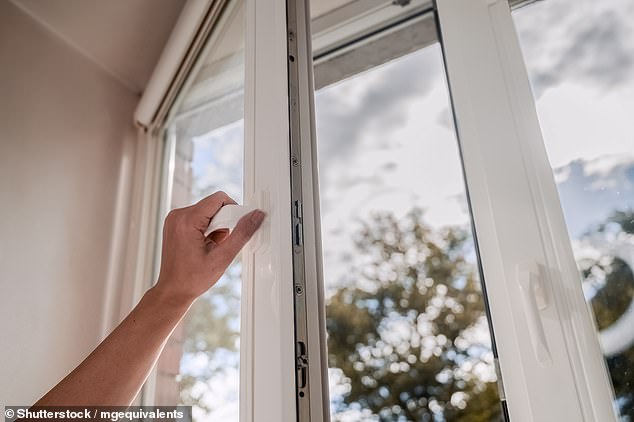Cooking Christmas dinner? Open the windows! Indoor pollution in homes is higher on Christmas Day than ANY other day of the year, study finds
- Indoor pollution in people's homes is higher on Christmas Day than any other day
- Experts suggest that people should open the window while doing Christmas cooking
Cooking Christmas dinner may require opening a window, which evidence suggests brings indoor pollution to its highest point of the year.
Indoor pollution in people's homes is higher on Christmas Day than any other day, with the main reason likely to be the preparation of a festive meal with all its trappings, a study has found.
Researchers in the United States analyzed the indoor pollution levels of nearly 4,000 households.
They looked at “large emission events,” where tiny air pollution particles called PM2.5 rose to a level exceeding 30 micrograms per cubic meter of air.
Christmas Day saw the highest number of such events, with an average of 0.31 events per day per household.
Cooking Christmas dinner may require opening a window, as evidence suggests it brings indoor pollution to the highest point of the year (stock image)
This has led to a worrying rise in indoor pollution on Christmas Day for every three homes – more than on any other day of the year.
This rate is 50 percent greater than what was seen during the rest of the winter, and about twice the rate seen in the summer.
These indoor pollution events are a health concern, because the World Health Organization's annual air quality guidelines recommend that annual PM2.5 should not exceed five micrograms per cubic meter of air.
PM2.5 are tiny pollutant particles small enough to be inhaled deep into the lungs.
Evidence has linked this type of pollution to an increased risk of cardiovascular disease and respiratory disease.
“As the winter months get colder and darker, we're spending more time at home and more time cooking — and that changes the air we breathe,” said Dr. David Lunderberg, who led the study from the University of California, Berkeley.

Experts suggest people should consider opening a window if Christmas cooking is likely to produce a lot of pollution
“In our study of air quality data from thousands of homes, we see that indoor events that produce particles are becoming more common in the winter and during food-driven holidays like Christmas.
“This study confirms previous research identifying human activities, especially cooking, as important sources of endogenous molecules.”
The new study, published in the journal Proceedings of the National Academy of Sciences, found that just over half of PM2.5 concentrations inside homes come from outside.
But the rest of this pollution comes from inside the home, and about 28% is thought to come from “incidental” activities such as cooking and cleaning.
In general, the new study found that indoor pollution events peak at 8 a.m., 12 p.m., and 6 p.m., the time when people typically prepare meals.
Nearly 10 times more emission events were observed during dinner hours compared to midnight.
Food that is seared, grilled or braised during cooking can produce small particles of contamination, as can food residue that collects in the oven or on the stove when it is burned.
Experts suggest people should consider opening a window if Christmas cooking is likely to produce a lot of pollution.
Burning candles and incense are another source of internal particles.
But the researchers concluded: “Emission events were more frequent during mealtimes, food-focused holidays, weekends, and wintertime, cumulatively proving that cooking is the dominant source of incidental PM2.5.”
“Improved source control measures such as use of range hoods, filtration, or ventilation during cooking provide opportunities to reduce occupants' exposure to accidental emission events that contribute just over half of the PM2.5 generated indoors.”
(tags for translation) Daily Mail
